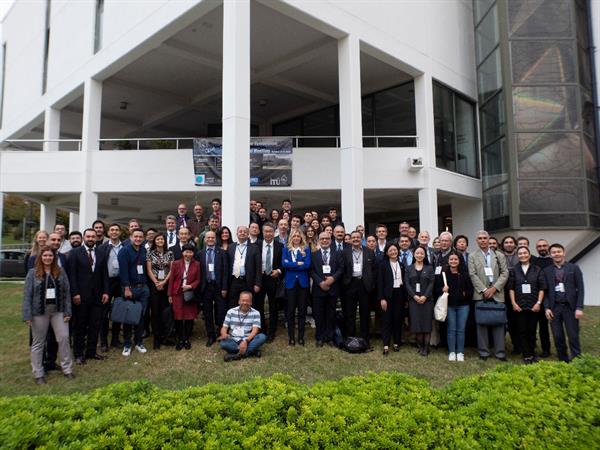Istanbul Technical University (ITU) hosted the 11th Nano-Satellite Symposium, an important event in the field of small satellites, in its 250th anniversary.
Istanbul Technical University (ITU) hosted the 11th Nano-Satellite Symposium, an important event in the field of small satellites, in its 250th anniversary. The symposium held on 17-19 October at Ayazağa Campus Süleyman Demirel Cultural Center, in cooperation with the University Space Engineering Consortium Global (UNISEC Global), with the support of the International Academy of Astronautics (IAA), was attended by scientists and representatives from 20 countries from 5 continents, with strong contributions of Japan, Türkiye, Europe and other nations. Along with the symposium, Preliminary Workshop for the 8th Mission Idea Contest for Multiple Nano-Satellites and the 8th UNISEC Global Meeting were held on 19-21 October, 2022.
The opening ceremony of the symposium started with the speech of Prof. Dr. Alim Rüstem Aslan from ITU Space Systems Design and Test Laboratory of FAA, who is the Türkiye chair of the organizing committee. UNISEC Global Secretary-General Rei Kawashima, Symposium General Chair Prof. Dr. Shinichi Nakasuka from University of Tokyo and Ali Baygeldi, Head of Space Systems and Spacecraft Department at TUA, talked about the importance of nano-satellites and the symposium in their opening speeches.
In his opening speech, our Rector Prof. Dr. İsmail Koyuncu stated that this symposium was held at ITU for the first-time outside Japan and proceeded as follows: “Over the last two decades, small satellites have been a disruptive technology changing the economics of space and forming the new space industry. As ITU, we pioneer technological innovations and transform the future. Our ITU Space Systems Design and Test Lab is the leading R&D institution in Türkiye for nanosatellites since 2005.”
During the symposium, in which ITU academics also took part with their presentations, the design, testing, control and operation of small satellites, parameters affecting satellite movements, analysis of the information obtained from satellites, and applications in various fields such as earth and space observations, communications, agriculture and seismology were discussed in the light of the latest developments.

Participants of 11th Nanosatellite Symposium